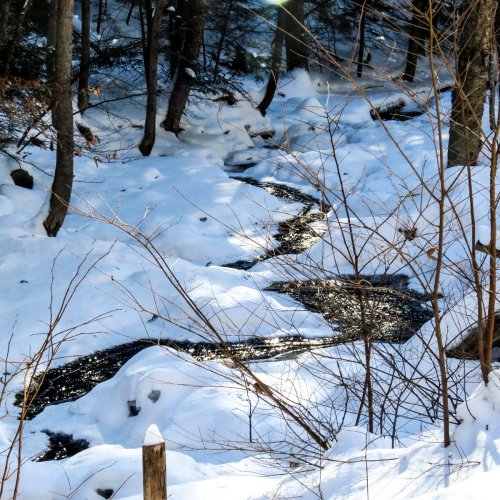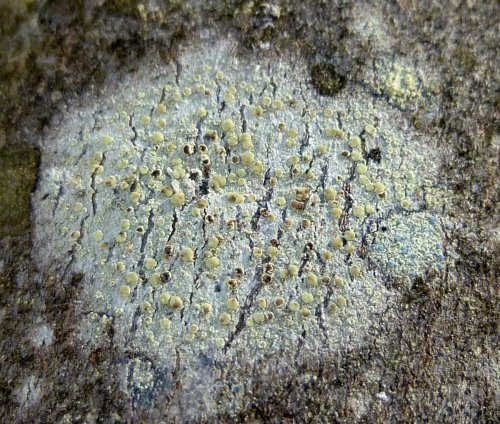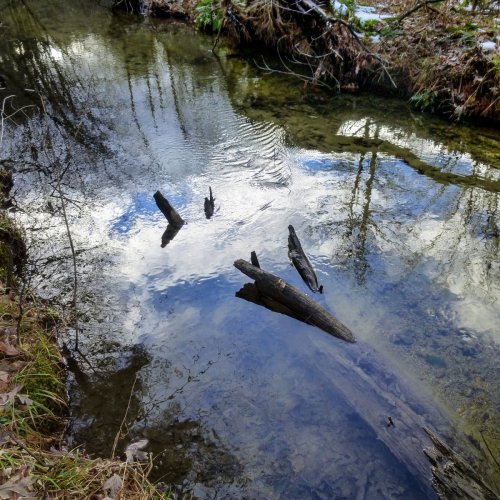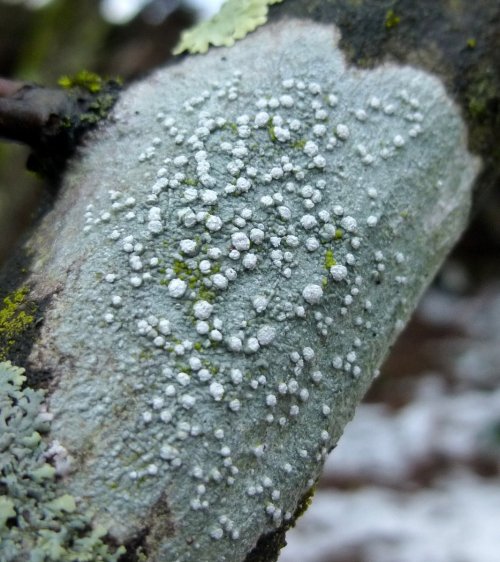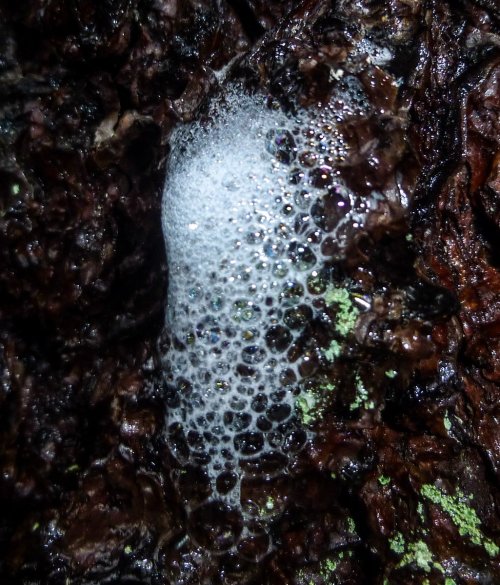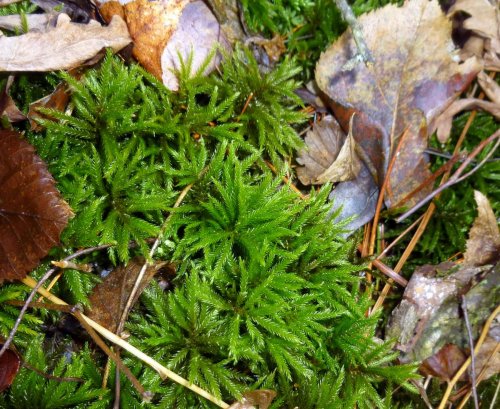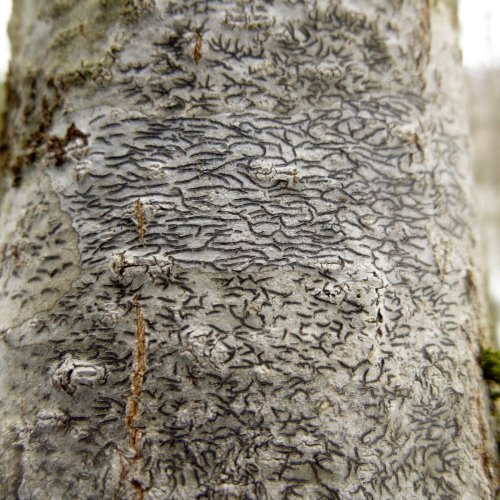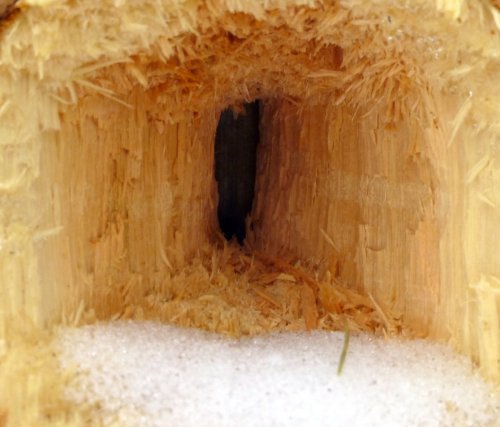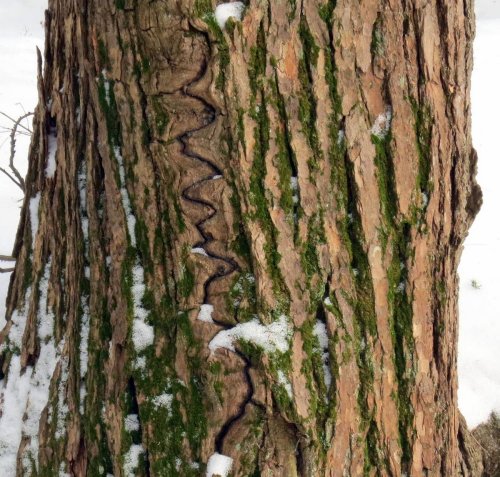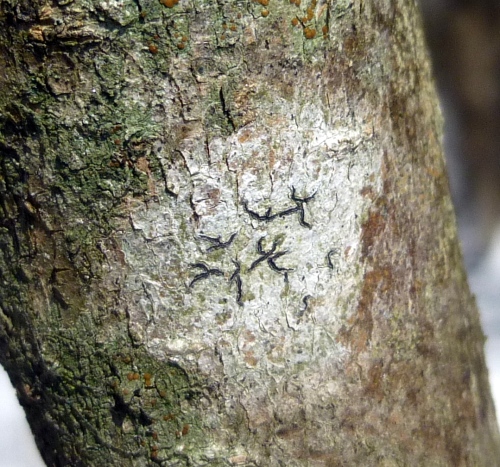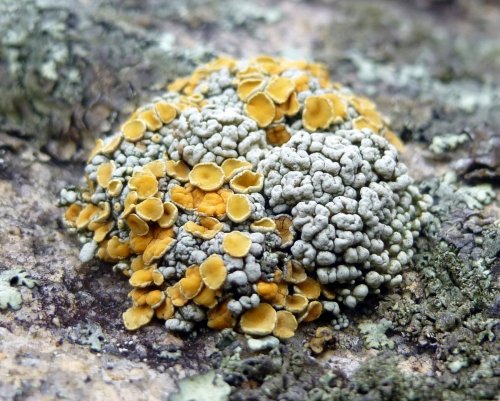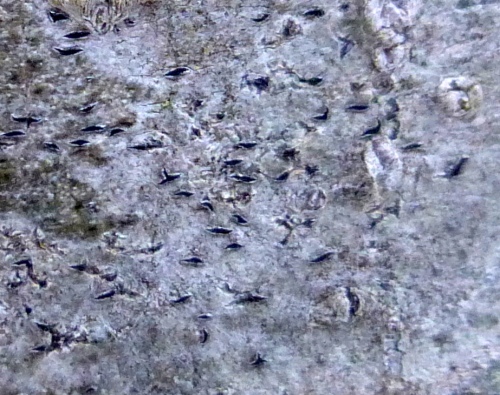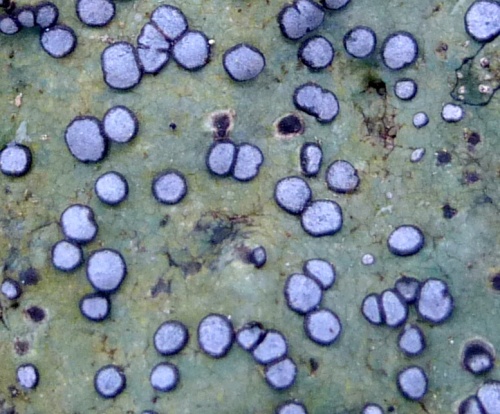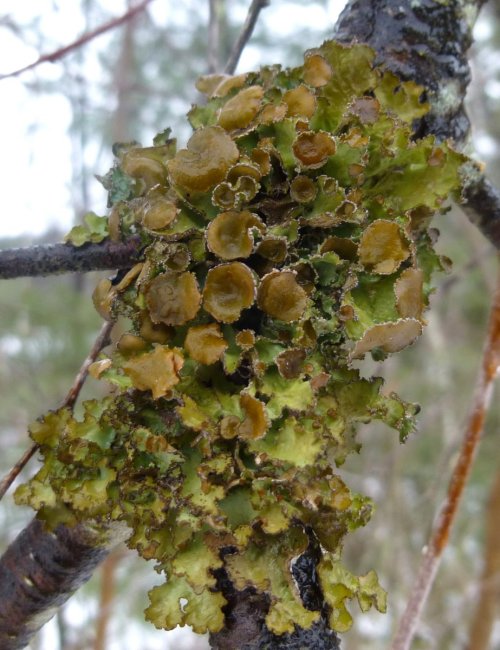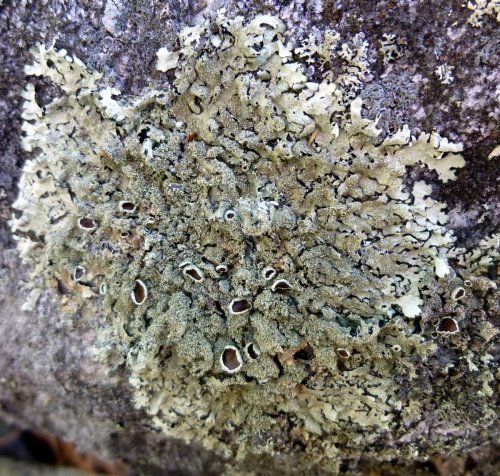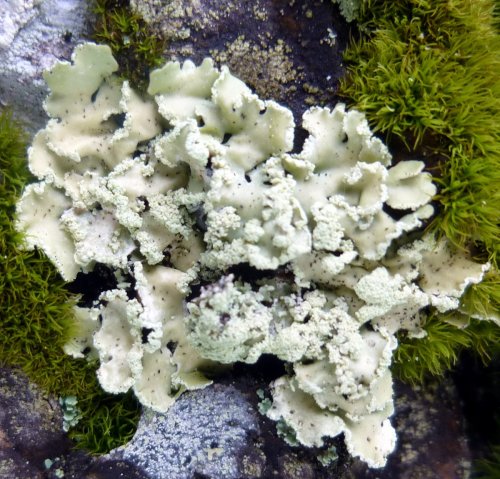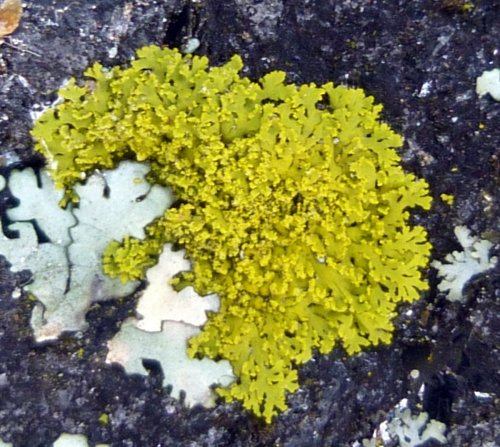I’ve agreed to help a group of youngsters called Pathfinders in their quest to find good examples of mosses, lichens and liverworts. I know of 2 places where they could find all three of them without too much trouble and decided that the old abandoned road along Beaver Brook would probably be the safest. From what I can tell Pathfinders are anywhere from 10-15 years old and get merit badges and other awards each time they meet certain goals, much like the Boy Scouts.
Anyone who has read this blog for very long knows that if you stand me up in front of a group of people and ask me to speak I immediately forget everything I’ve ever known, but this should be very different. By reading other nature blogs I know that people who lead excursions like these usually go off on the hunt alone before they lead a group, so that’s what I did. Beaver Brook was almost completely iced over with just a narrow ribbon of water glistening in the sunshine. It was sunny but it was cold and the snow where it hadn’t been walked on was quite deep. Since I made this trip we’ve gotten over a foot of new snow, so I hope the Pathfinders have already earned their winter survival badges.
I chose this place because of the easily accessible ledges and trees. Since vertical ledges and trees don’t accumulate much snow the lichens, mosses and liverworts that grow on them are easy to find all winter long. We’ll have to pay close attention to ice though; we don’t want anyone standing under that. Since this trip is planned towards the end of the month the ice could be rotten and falling by then.
Beautiful smokey eye boulder lichens(Porpidia albocaerulescens) grow on the stone of the ledges along with many other lichens and mosses. I’m hoping that each Pathfinder has his or her own loupe or magnifying glass so they can see details like the beautiful sky blue fruiting bodies (Apothecia) on this lichen. Part of this lichen in the top center of the photo was under ice, and what a difference it made in its appearance.
While I was looking for lichens I found a pocket of milky quartz crystals that I’ve never seen here before. It seems like every time I come here I see something new and on this day, between lichens and quartz crystals, I found three things that I had never seen here. That’s why it pays to follow the same trails over and over; you think you’ve seen all there is to see but you find that you haven’t even come close.
There was a quarter sized hole in the snow that must have had warm water vapor rising up through it, because its edges were decorated with delicate, feather like frost crystals.
Yellow feather moss (Homalothecium lutescens) always looks pale and sickly but it is perfectly healthy, as its spore capsule production shows. This moss is rare here and this small clump is the only example I know of, so maybe it will earn the Pathfinders some extra points.
I won’t tell you how many shots of this yellow feather moss spore capsule I had to take before I got a useable one, but it was a lot. This example still has its tiny, pointy, red cap-like lid (operculum), meaning it hasn’t released its spores yet.
Stair step moss (Hylocomium splendens) is another beautiful moss that I’ve seen nowhere but here. It’s looking a little dry at the moment but it will snap back as soon as it warms up and we get some rain. This moss gets its common name from the way new leaves “step up” from the backs of older leaves.
I found a crustose lichen that I’ve never seen before. It grew on tree bark and I think that it might be a fused rim lichen (Lecanora symmicta.) Fused rim lichens get their name from the way the tan colored fruiting bodies (Apothecia) sometimes fuse together. I don’t know if this is a rare lichen or if I’ve just never noticed it before because it fruits in winter, but it’s something else that might earn the Pathfinders extra points.
I’ve known for a long time that lichens change color when they dry out but I didn’t know that cold affected them. Then I started seeing blue lichens in places where I was sure there were none before and I realized that some of the lichens that I saw in the summer were turning blue in winter. That isn’t much help when it comes to identifying them though, so now I have to go back when it’s warmer and see if I can figure out what they are. Once I’ve identified them I can see what the books say about them turning blue.
The Pathfinders need to find 5 mosses, 5 lichens, and 1 liverwort and the greater whipworts (Bazzania trilobata) that grow on the ledges here will take care of the liverwort requirement. They’ve shriveled a bit because of the cold and dryness but it’s still obvious that they aren’t a moss. I always find these liverworts growing on stones near streams, so they must like high humidity.
Script lichens (Graphis) are another candidate for a hand lens but well worth the effort. There are 39 species of script lichens in North America and many more throughout the world and their most important identification characteristic is their squiggly apothecia, which look like ancient script written on tree bark. I counted at least five different species on this day in just this small area, but I think you could probably spend a lifetime trying to identify script lichens. If I was still a teenager I might take on such a challenge.
I’m sure that the Pathfinders will find all that they’re looking for and plenty more besides. I even found a bright yellow fungus that I think might be a crowded parchment (Stereum complicatum), even though they are usually orange. Color like this is always a welcome sight in winter and I hope I can remember where it was so I can show it to them.
The only thing I can’t be sure of is how much snow we’ll have by the day of our trip. I’ve already had to start wearing gaiters, but if we keep getting two or three snowstorms each week like we have been lately we might all need snowshoes.
I’m glad that I made this solo journey because now I know that the kids won’t be disappointed. There is plenty here to see and I hope they will come away from this place with an urge to see more and learn more. I also hope the knowledge that they can see beauty virtually anywhere as long as they are willing to look for it will stay with them for a good long time.
Every child is born a naturalist. His eyes are, by nature, open to the glories of the stars, the beauty of the flowers, and the mystery of life. ~ Ritu Ghatourey
Thanks for stopping in.

